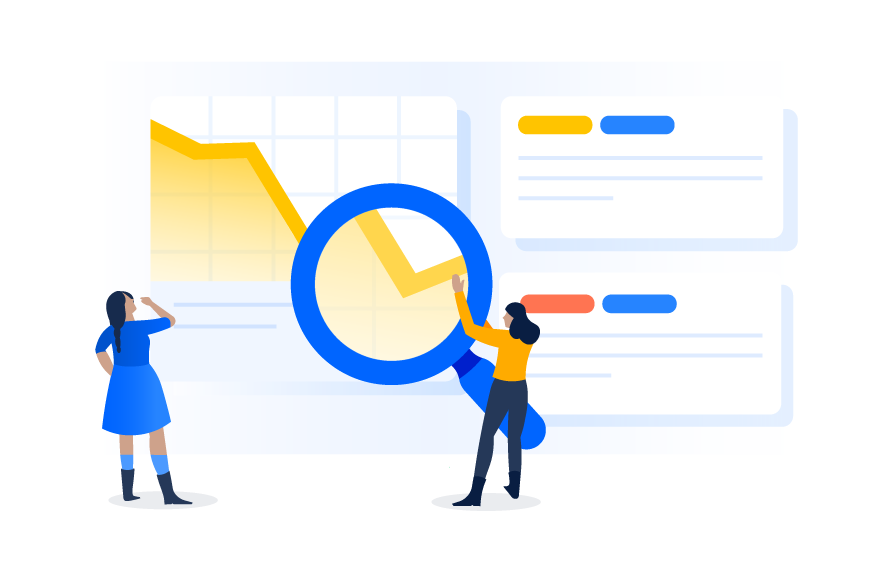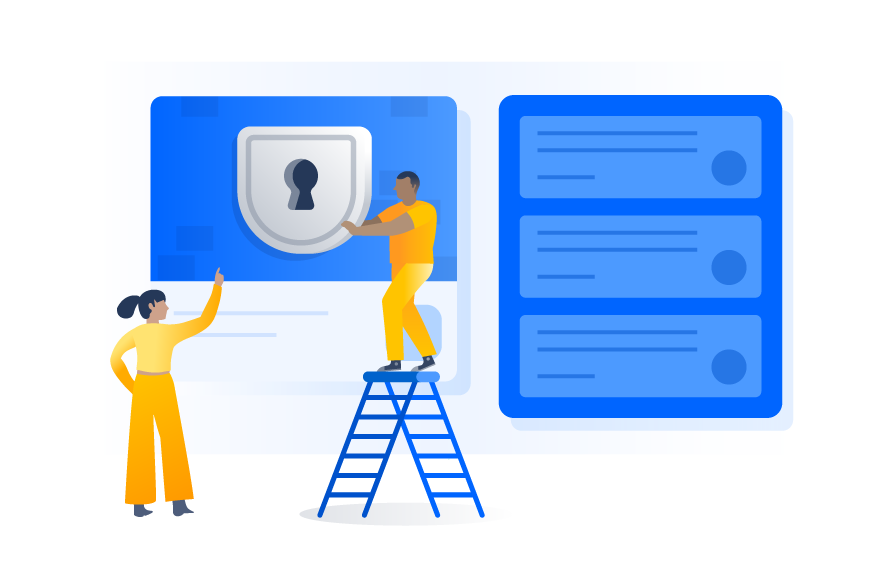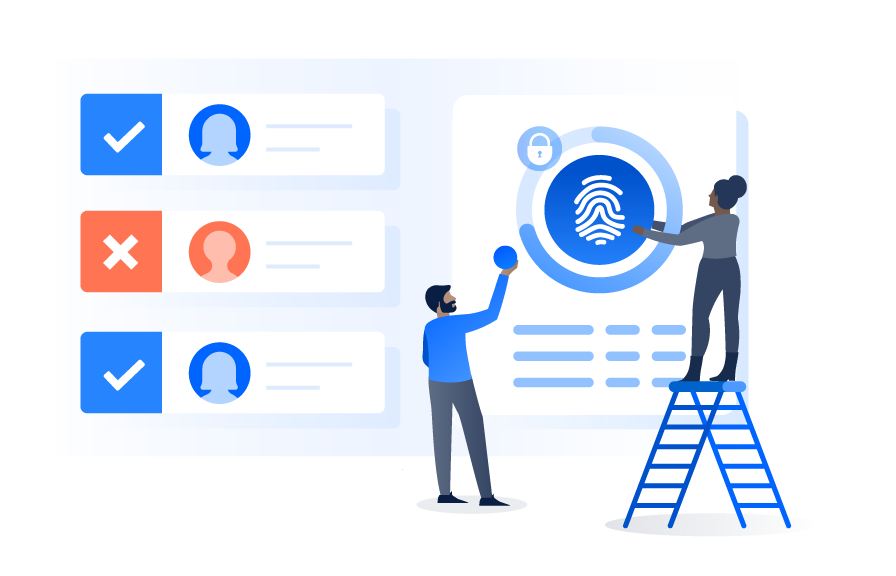3 amenazas para la seguridad comunes y cómo proteger tu organización

Las organizaciones, independientemente del sector, deben priorizar la seguridad a medida que se desarrollan y crecen. La protección de tus empleados y tus datos es de suma importancia y, si tu organización no es capaz de dar respuesta a esas exigencias, te arriesgas a perder dinero, a que los datos se corrompan y a interrumpir por completo las operaciones empresariales.
Es muy probable que las organizaciones sufran una infracción de seguridad de los datos o del sistema en algún momento de su trayectoria. Las amenazas contra la ciberseguridad aumentan en frecuencia, diversidad y complejidad. Según un estudio reciente sobre ciberseguridad realizado por IBM Security, se tarda una media de 280 días en identificar y contener una infracción de datos y puede costar hasta 3,86 millones de dólares. Estas cifras aumentan año tras año y, sin la visibilidad y el control adecuados para supervisar y evaluar los riesgos, las organizaciones son vulnerables. Ahora más que nunca, las empresas deben priorizar la protección de los datos confidenciales que tienen a su cargo.
Si bien es fundamental estar preparado sin importar la probabilidad de los ataques, conocer los riesgos y el nivel de tolerancia puede ayudarte a entender cómo debes preparar tu organización. Estas medidas pueden ayudarte a gestionar los riesgos y reducir las amenazas, evitando graves daños como la carga financiera y la pérdida de propiedad intelectual. Pero ¿a qué riesgos de seguridad puede exponerse tu organización y cómo afectaría eso a tus equipos? Repasemos algunas incidencias empresariales habituales y cómo puedes evitar que tus productos de Atlassian sufran ataques.

Audita tus cuentas frecuentemente y limita el acceso de administrador
Si bien utilizar métodos de seguridad mejorados es un buen comienzo, te recomendamos que audites tus cuentas periódicamente. Esto te permite gestionar eficazmente a los usuarios con acceso a tus datos e impedir el acceso a cualquier persona que no deba tenerlos. Los administradores de los productos de Data Center y Atlassian Cloud tienen privilegios especiales a la hora de ver y compartir la información, y conceder acceso. Al delegar el acceso, asegúrate de que los privilegios de administrador solo se concedan a quienes los necesitan.
Comunica las prácticas recomendadas
Mantener la seguridad de la información de la empresa es responsabilidad de toda la organización. Al educar a tus equipos sobre las amenazas y la mitigación de riesgos, puedes implementar prácticas recomendadas de protección y fomentar una cultura de seguridad eficaz. Estas son algunas recomendaciones para tus usuarios:
- Recuerda a los usuarios que no deben incluir números de tarjetas de crédito en los tickets, las páginas, etc.
- Recuerda a los usuarios que restrinjan el acceso a las páginas o los tickets que incluyan información de los clientes u otra información confidencial.
- Anima a los empleados a usar contraseñas seguras y a cambiarlas con regularidad.
- Recomienda a los usuarios que habiliten la verificación en dos pasos individual en su cuenta de Atlassian.

Aplica políticas en tu organización que mejoren la seguridad del inicio de sesión
Contar con un proceso de inicio de sesión seguro es fundamental para la protección de los datos. Estas son algunas formas de proteger tus credenciales de inicio de sesión:
- Verificación en dos pasos individual: es un buen comienzo para proteger tus cuentas de Atlassian y se recomienda especialmente en las cuentas con muchos privilegios.
- Verificación en dos pasos forzada: con una suscripción de Atlassian Guard, puedes llevar estos protocolos un paso más allá y aplicar la verificación en dos pasos en toda la organización.
- Políticas de contraseñas: también disponible en Atlassian Guard, una política de contraseñas garantiza el uso de las prácticas recomendadas por parte de los equipos al crear contraseñas y permite al administrador establecer los requisitos de seguridad y las fechas de caducidad de las contraseñas, con lo que se minimiza el riesgo de poner en peligro las contraseñas.
Educa a los empleados en relación con la propiedad intelectual
Los talleres y la formación en concienciación pueden ser eficaces para prevenir las vulneraciones de la propiedad intelectual. No basta con centrar únicamente la protección de la propiedad intelectual en los firewalls y los derechos de autor; la formación de los empleados debe formar parte de tu estrategia. En la mayoría de los casos, la propiedad intelectual se filtra por accidente o por negligencia. Tomemos el correo electrónico, por ejemplo; la propiedad intelectual se puede enviar accidentalmente a la persona equivocada en un archivo adjunto con contenido oculto o el remitente puede enviarla a una dirección incorrecta. Asegúrate de que tus empleados sepan cómo pueden exponer involuntariamente la propiedad intelectual a través de, por ejemplo, cuentas de correo electrónico personales, correo corporativo, uso compartido de archivos o herramientas de colaboración como Slack o Dropbox.

Configura el inicio de sesión único con tu proveedor de identidades
El inicio de sesión único (SSO) es una excelente solución para gestionar el acceso a las cuentas y ofrece una experiencia fluida a los usuarios finales. Y, lo que es más importante, el SSO mitiga los riesgos de seguridad causados por el aumento del número de aplicaciones e inicios de sesión a medida que el negocio crece. La compatibilidad de Atlassian con el SSO ofrece funciones como el aprovisionamiento JIT (Justo a Tiempo), la gestión centralizada de las políticas de autenticación y el bloqueo automático al desactivar a los usuarios del proveedor de SSO.
Configurar el provisionamiento y desaprovisionamiento automático de usuarios
El aprovisionamiento automático de usuarios permite una conexión directa entre el proveedor de identidades y los productos de Atlassian. Las funciones avanzadas de gestión de usuarios de Data Center permiten a los administradores supervisar las actividades relacionadas con los usuarios y lograr una autorización y una autenticación fáciles y seguras de forma sencilla. Esto significa que los administradores pueden gestionar las identidades de los usuarios mediante una vista centralizada para aprovisionar y eliminar a los usuarios bajo demanda. La posibilidad de desaprovisionar a los usuarios reduce el riesgo de incidentes de seguridad al eliminar el acceso a quienes se van de la organización. Atrás quedaron los días de crear y desactivar las cuentas de usuario manualmente cada vez que alguien se incorpora o deja la empresa. Estas funciones avanzadas te dan el control y la visibilidad que necesitas, lo que te ahorra tiempo y garantiza la seguridad de tus productos.
Descubre cómo protege Atlassian tus datos
A la hora de escalar un equipo y desarrollar los procesos de flujo de trabajo, es imprescindible mantener un entorno seguro. Los productos de Atlassian ofrecen funciones integradas para satisfacer las demandas de las organizaciones que requieran una mejora de la seguridad y el cumplimiento normativo.
Obtén más información sobre cómo puede contribuir Atlassian a tu planificación de la seguridad en nuestro sitio de Trust.